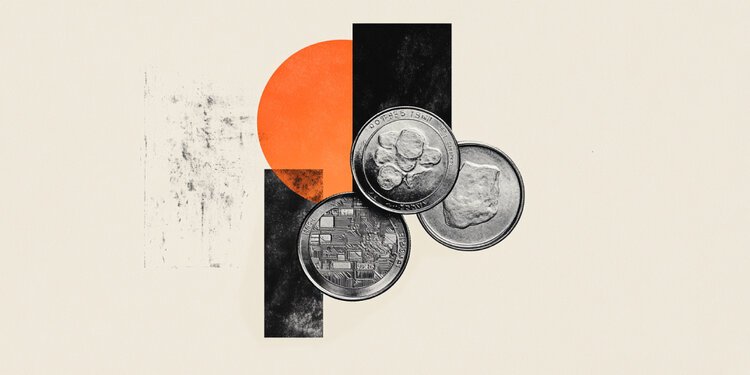You have reached your limit of 5 free articles for this month.
Get Premium without limits for only $479.76 for the first month
Access all our articles, insights, and analysts.

Your coupon code
- AUD/USD’s upswing faltered just ahead of 0.6800.
- The US Dollar managed to regain the smile on Monday.
- Next on tap in Oz is the Westpac Leading Index.
AUD/USD struggled to maintain its upward momentum at the beginning of a new trading week, coming in short of the 0.6800 milestone and halting a four-day positive streak.
The pair’s consecutive gains were driven by increased weakness in the US Dollar (USD) as of late, especially after US inflation readings for June fell below expectations. This fueled speculation about a potential interest rate cut by the Federal Reserve (Fed) as early as September, with some investors even adding a potential third interest rate cut this year.
This outlook contrasts with recent comments from Fed Chair Jerome Powell, who took a cautious approach during his testimonies before Congress as he indicated that more evidence of inflation moving towards the target is needed before any rate adjustments are made.
Additionally, daily declines in copper and iron ore prices have also collaborated with Monday’s inconclusive performance of the Australian Dollar.
In terms of monetary policy, both the Reserve Bank of Australia (RBA) and the Fed are expected to be among the last G10 central banks to begin cutting interest rates.
At its latest meeting, the RBA maintained a hawkish stance, keeping the official cash rate at 4.35% and indicating flexibility for future decisions. The meeting minutes revealed that the decision to hold the policy rate was mainly due to uncertainty around consumption data and clear evidence of financial stress among many households.
The RBA is not in a hurry to ease policy, anticipating it will take time before inflation consistently falls within the 2-3% target range. There is approximately a 25% chance of a rate cut in August, increasing to around 50% in the following months.
Additionally, potential easing by the Fed, contrasted with the RBA’s likely prolonged restrictive stance, could support AUD/USD in the upcoming months.
However, concerns about slow momentum in the Chinese economy might hinder a sustained recovery of the Australian currency, as China continues to face post-pandemic challenges. The persistent lack of traction in Chinese inflation could lead to some stimulus from the People’s Bank of China (PBoC), which might eventually support AUD, although the release of disappointing GDP figures in Q2 seem to have also weighed on the sentiment surrounding AUD
Data-wise, in Australia, the next release of note will be the Leading Index gauged by Westpac on July 17, seconded by the speech by the RBA’s Simon.
AUD/USD daily chart
AUD/USD short-term technical outlook
If bulls continue higher and AUD/USD clears the July high of 0.6798 (July 8), it may challenge the December 2023 top of 0.6871, followed by the July 2023 peak of 0.6894 (July 14), all before reaching the critical 0.7000 level.
Bearish efforts, on the other side, might push the pair lower, first to the interim 55-day SMA at 0.6650 and then the June low of 0.6574 (June 10). A deeper drop could see the important 200-day SMA of 0.6573 revisited prior to the May low of 0.6465 and the 2024 bottom of 0.6362 (April 19).
Overall, the uptrend should continue as long as the AUD/USD trades above the 200-day SMA.
The 4-hour chart shows some consolidative mood kicking in. However, 0.6798 looks to be the first up-barrier, ahead of 0.6871. On the other hand, 0.6709 provides rapid support before the 100-SMA of 0.6701. The RSI decreased to around 55.
- AUD/USD’s upswing faltered just ahead of 0.6800.
- The US Dollar managed to regain the smile on Monday.
- Next on tap in Oz is the Westpac Leading Index.
AUD/USD struggled to maintain its upward momentum at the beginning of a new trading week, coming in short of the 0.6800 milestone and halting a four-day positive streak.
The pair’s consecutive gains were driven by increased weakness in the US Dollar (USD) as of late, especially after US inflation readings for June fell below expectations. This fueled speculation about a potential interest rate cut by the Federal Reserve (Fed) as early as September, with some investors even adding a potential third interest rate cut this year.
This outlook contrasts with recent comments from Fed Chair Jerome Powell, who took a cautious approach during his testimonies before Congress as he indicated that more evidence of inflation moving towards the target is needed before any rate adjustments are made.
Additionally, daily declines in copper and iron ore prices have also collaborated with Monday’s inconclusive performance of the Australian Dollar.
In terms of monetary policy, both the Reserve Bank of Australia (RBA) and the Fed are expected to be among the last G10 central banks to begin cutting interest rates.
At its latest meeting, the RBA maintained a hawkish stance, keeping the official cash rate at 4.35% and indicating flexibility for future decisions. The meeting minutes revealed that the decision to hold the policy rate was mainly due to uncertainty around consumption data and clear evidence of financial stress among many households.
The RBA is not in a hurry to ease policy, anticipating it will take time before inflation consistently falls within the 2-3% target range. There is approximately a 25% chance of a rate cut in August, increasing to around 50% in the following months.
Additionally, potential easing by the Fed, contrasted with the RBA’s likely prolonged restrictive stance, could support AUD/USD in the upcoming months.
However, concerns about slow momentum in the Chinese economy might hinder a sustained recovery of the Australian currency, as China continues to face post-pandemic challenges. The persistent lack of traction in Chinese inflation could lead to some stimulus from the People’s Bank of China (PBoC), which might eventually support AUD, although the release of disappointing GDP figures in Q2 seem to have also weighed on the sentiment surrounding AUD
Data-wise, in Australia, the next release of note will be the Leading Index gauged by Westpac on July 17, seconded by the speech by the RBA’s Simon.
AUD/USD daily chart
AUD/USD short-term technical outlook
If bulls continue higher and AUD/USD clears the July high of 0.6798 (July 8), it may challenge the December 2023 top of 0.6871, followed by the July 2023 peak of 0.6894 (July 14), all before reaching the critical 0.7000 level.
Bearish efforts, on the other side, might push the pair lower, first to the interim 55-day SMA at 0.6650 and then the June low of 0.6574 (June 10). A deeper drop could see the important 200-day SMA of 0.6573 revisited prior to the May low of 0.6465 and the 2024 bottom of 0.6362 (April 19).
Overall, the uptrend should continue as long as the AUD/USD trades above the 200-day SMA.
The 4-hour chart shows some consolidative mood kicking in. However, 0.6798 looks to be the first up-barrier, ahead of 0.6871. On the other hand, 0.6709 provides rapid support before the 100-SMA of 0.6701. The RSI decreased to around 55.






